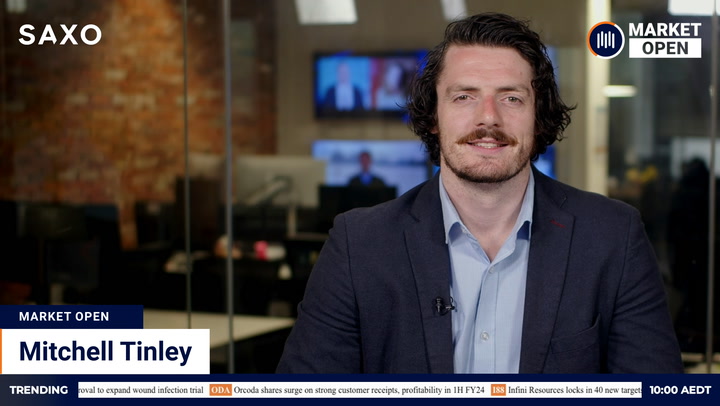The share market looked set to extend its longest losing run since mid-May after US stocks fell as the Federal Reserve indicated it may reduce support for the economy this year.
ASX futures skidded 49 points or 0.66 per cent. The S&P/ASX 200 has fallen for three straight sessions, finishing nine points or 0.12 per cent in the red yesterday after falling as much as 40 points.
The Dow and S&P 500 declined more than 1 per cent. Iron ore, oil and copper dropped to multi-month lows. Gold reversed an early fall. The dollar sank to its weakest level since November.
Wall Street
US stocks retreated as the minutes from the July Fed meeting showed a majority of committee members think the economy might be strong enough to start reducing the bank’s bond-buying program before year-end.
The S&P 500 fell 48 points or 1.07 per cent to a second straight loss. The Dow Jones Industrial Average shed 382 points or 1.08 per cent. The Nasdaq Composite gave up 130 points or 0.89 per cent.
“Most participants noted that, provided that the economy were to evolve broadly as they anticipated, they judged that it could be appropriate to start reducing the pace of asset purchases this year,” the Fed minutes said.
The minutes showed broad agreement that the economy had reached the bank’s inflation target. The committee was “close to being satisfied” on employment, but labour markets had not yet met the Fed’s objective of “substantial further progress”.
The meeting kept official interest rates at a record low. The bank stressed that it sees raising rates and reducing quantitative easing as separate issues. The minutes noted the need to “reaffirm the absence of any mechanical link between the timing of tapering and that of an eventual increase in the target range for the federal funds rate.”
“The Fed minutes did nothing to dispel the thought that tapering will begin soon,” Peter Tuz, president of Chase Investment Counsel, told Reuters. “We are closer to the end than the middle of tapering, and people don’t know how to react to it.”
The immediate response was up-ticks in the dollar and bond yields, and broad selling in stocks. Ten of eleven sectors declined, led by energy, health and tech. The consumer discretionary sector edged higher, thanks to well-received earning updates from Lowe’s and TJX.
Australian outlook
No relief in sight as we near the end of an increasingly stormy week. The market mood has soured notably this week following the month-long armchair ride from July 20 to last Friday.
The S&P/ASX 200 has fallen for three straight days for the first time in three months. The index showed promising signs yesterday of a tentative reversal, but will struggle to avoid a fourth loss with these leads. Wall Street threw a taper tantrum, key commodities fell heavily, BHP was pummelled on overseas trade and Rio Tinto also declined.
Earnings season continues to gallop along with reports due today from Newcrest, Treasury Wine Estate, South32, Origin Energy, Star Entertainment, Iress, Evolution Mining, ASX, Redbubble, Orora, Perpetual, humm, Airtasker, Data#3, Integrated Research, Senex, Beacon Lighting and Charter Hall Group (sources: CommSec, Bell Potter).
The July employment report at 11.30 am AEST is expected to show the early effects of the Greater Sydney lockdown. The consensus among economists is for unemployment to edge up to 5 per cent from 4.9 per cent after the economy shed around 42,500 jobs.
US sector analysis offers no obvious pockets of strength. The sinking tide lowered all ships except consumer discretionary, which responded favourably to quarterly earnings. The energy sector dived 2.4 per cent, financials 1.16 per cent and materials 1.13 per cent.
Of the usual defensive havens, health slumped 1.46 per cent, consumer staples 1.27 per cent and utilities 0.47 per cent. The NYSE Arca Gold Bugs Index sank 2.75 per cent.
The dollar was smashed down towards 72 US cents, a level last seen in November. The Aussie was last off 0.28 per cent at 72.35 US cents.
Commodities
Iron ore tumbled 4 per cent to its lowest since March as inventories at Chinese ports increased. Data from Mysteel showed inventories at 45 ports rose by 260,000 tonnes last week to 127 million tonnes. The spot price for ore landed in China dropped US$6.45 or 4 per cent to US$153.05 a tonne.
“Prices fell but are still at high levels,” analysts at Huatai Futures wrote. “However, with government stepping up steel output cuts, iron ore could face increasing pressure.”
BHP was yesterday’s biggest drag on the ASX and looked set for further weakness following sharp falls in overseas listings. The miner’s US-listed stock shed 6.24 per cent and its UK-listed stock 5.94 per cent. Rio Tinto dropped 3.51 per cent in the US and 2.57 per cent in the UK.
Oil wilted to its lowest since May as fears about the demand hit from delta Covid lockdowns overshadowed a drawdown in US inventories. Brent crude settled 80 US cents or 1.2 per cent lower at US$68.23 a barrel.
“Investors are worried that oil prices went too high during its rallying phase when optimism was sky-high about demand returning to normal. But now, investors are forced to reassess those rosy views and are realizing that demand is actually a little softer,” Fawad Razaqzada, market analyst with ThinkMarkets, wrote.
Gold settled lower ahead of the Fed minutes, but rose after the bank showed signs of winding back stimulus. Gold for December delivery settled US$3.40 or 0.2 per cent in the red at US$1,784.40 an ounce. The yellow metal was last up US$1.90 or 0.11 per cent in electronic trade at US$1,789.70.
Copper dropped for a third day to its lowest in around two months. Benchmark copper on the London Metal Exchange declined 2.2 per cent to US$9,024 a tonne. Aluminium lost 1.7 per cent, nickel 1.6 per cent, zinc 0.7 per cent and tin 1.1 per cent. Lead rallied 1.9 per cent.
With copper, “we’re seeing a breakdown in the technicals, the growth outlook from China is not supportive and the dollar is challenging key resistance areas,” Ole Hansen, head of commodity strategy at Saxo Bank, told Reuters.







